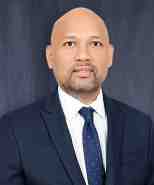Edition Focus: Fast Casual Dining & QSR
Foreword by Kristian Pedersen, Partner – Global Consumer & Retail Practice, and Sunandan Chaudhury, Client Partner, Pedersen & Partners
Welcome to the inaugural edition of the Industry Pulse – the Pedersen & Partners Global Consumer & Retail Practice Group newsletter, where we take a closer look at brands, leaders and sectors to gain industry insights, discover new trends and hear the story behind the story directly from industry leaders.
In this first issue of the Industry Pulse, we have an exclusive interview with Niren Chaudhary, Chairman of Panera Brands, which combines our deep interest and hiring experience in the Fast Casual Dining and Branded Quick-Serve Restaurants segments, with the thrill of gaining an insight into the thought leadership of one of the industry's prominent leaders.
We have chosen this focus because the segment continues to grow and transform, despite challenges including Covid-19, high inflation, global supply chain issues, technological transformations, and sustainability demands. Perhaps the most interesting challenge of all is that of evolving consumer and employee behaviours such as health concerns, changing consumption patterns, and work preferences.
According to the International Franchise Association’s annual Economic Outlook Report 2023, the estimated industry growth for quick-serve restaurants is expected to surpass pre-pandemic levels.
In this exclusive interview with Niren Chaudhary, we learn that the industry's growth is a result of high agility in rapidly adapting menus, adoption of new technology, improved ways of working, and adjusting store formats to fit the new reality. Panera Brands is strengthened by its strong long-term vision, lasting brand values and consistent focus on people... along with quirky rewards and celebrations.
You’ve worked with some fantastic brands, such as KFC and now Panera Brands – on a local, regional and global level. What makes these brands so successful? What’s the secret sauce?
I’ve spent about 30 years in food retail, 25 of which were with Yum Brands: Pizza Hut, KFC, and Taco Bell.
I’ve been very fortunate to work with incredible leaders, companies, and brands. In answer to your question about what makes brands distinctive and successful, I’d say the playbook is very simple: It’s about executing the brand promise.
Anybody can craft a strategy because strategy is a function of intellect. But executing a strategy is a function of the heart.
You must have a brand with a clear, distinctive proposition, and then you must bring it to life every single day, in every single outlet, for every single customer, across the countries in which you operate.
What does success look like for you, Niren?
For me, success is not a unidimensional expression of who I am. It is a multidimensional, kaleidoscopic expression of who I want to be as a leader, a father, a son, a parent, a student, a musician, a sports person, a linguist, a spiritual student, and a community server. In all those roles, I want to make sure that I am constantly striving to be the very best version of who I can be. That’s what success means to me – fulfilling the potential that I have.
We’ve heard about the personalised awards that you used to give to team members, and that you visit stores very often and get instant feedback from customers. Does that give you greater strength to carry on what you do?
My mindset is that whatever I wish to see in the organisation, I must first do it myself. If I want our leaders to be in the cafés, I must be in the café myself. If I want our teams to talk to guests and care for them, I must first care for them, the employees. If my associates are happy and love our guests in turn, that’s how we’ll become successful. For me, it’s a very natural extension of leadership: whatever the leaders say, they must be willing to first and foremost do it themselves.
And I believe that recognition is a very important cornerstone of any culture where you create an environment of catching people doing things right, as opposed to catching them doing things wrong.
The people and talent aspects are very important to you and to the business. How do you ensure that you get the best and the right people?
That’s a great question. First, I have the privilege of leading a world-class executive team. In our cafés, it’s somewhat easier because of this unique ownership construct, and due to the power of the brand. We are a very aspirational set of brands, and we have the investment construct. I take my role very seriously in creating the right culture where my teams feel that they’re growing and developing, engaged and connected.
That’s how you drive results in an organisation, by making sure that you have a value proposition that appeals to your people first and foremost – that way, you can attract, retain, and grow the most talented people.
You also have a strong e-commerce channel. How do you balance the technological advances with that attitude for the people, and where do you rate yourself in your peer cohorts on automation technology and digitalisation?
We are, and always have been, the digital tech leaders in the food retail industry, and we continue to invest significant amounts of capital in developing our tech stack.
We have a very large number of My Panera loyalty program members. We are very tech-forward, and we are constantly looking at ways of leveraging technology to reduce friction, personalise the guest experience and drive productivity for our labour and our associates.
I know that a lot of people are concerned about AI and the general impact of technology on the future of the workforce and employability. My mindset is that it is fantastic because it’ll give us the opportunity to use human capital more productively.
It is not to be feared; it’s to be embraced and leveraged, in a way that enables you to become better and use human potential in areas that require human skills, judgment, and emotion.
We saw the concerns for health during the pandemic, and health is becoming a key element: what are you doing to bring healthy options?
Our brand leads on serving food with integrity. Our animal proteins are responsibly raised; that’s a very high bar to have on the supply chain, but we are very committed to it.
Our mindset is that at Panera we will not serve food that we wouldn’t serve to our own families.
As a leader, what’s your biggest learning and do you have any stories that capture that?
We all understand the importance of competence, but I wish and pray that more leaders understood the importance of character. The world needs it more than ever; character essentially means that we as leaders spend time defining what’s important to us, and what our values are. If we embrace the right values, and have the right thoughts, and behaviours, then we create trust.
Our values are shaped by our childhoods, our upbringing, what we read, the company we keep, the friends that we have, and the people who inspire us. Being very conscious about nurturing ourselves spiritually so that we have the right values is a very important aspect of leadership.













